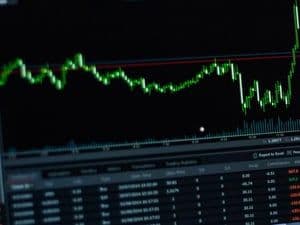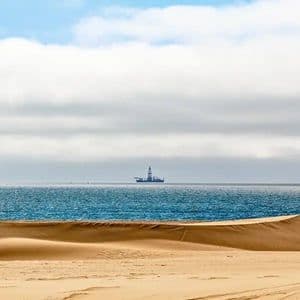The Brent Paradox: Why Today's Stability Hides Tomorrow's Supply Surge
Unpack Brent's complex journey. A minor OPEC+ output rise sparked relief, yet a massive 2026 supply surplus threatens. Delve into the hidden forces shaping crude prices.

The Immediate Jolt: Why Brent Breathed a Sigh of Relief
The Brent crude market recently experienced an immediate, albeit modest, uplift following a crucial decision from . When the cartel, along with its allies, announced a production adjustment of just 137,000 barrels per day (bpd) for November, the market reacted with palpable relief. Brent futures, which had been down on fears of an aggressive supply surge, jumped 1.2 percent to $65.3 per barrel almost instantly. This wasn't a sign of overwhelming bullishness, but rather a collective sigh of relief that OPEC+ hadn't 'opened the floodgates' with a much larger increase, perhaps 500,000 bpd, as some had feared. highlighted this cautious approach, noting that the group isn't looking to crash prices. However, this immediate positive reaction masks a deeper, more nuanced reality. While the market appreciated the measured hand, the underlying sentiment, as articulated by , is that the market has 'flipped from tight to tepid,' indicating that even these gradual production increases will continue to test price support amidst evolving demand dynamics.

OPEC+'s Measured Hand: Decoding the Production Tweak
The recent decision, involving key players like Saudi Arabia, Russia, Iraq, and the UAE, to increase production by a relatively small 137,000 bpd for November marked an eighth consecutive monthly adjustment. This incremental approach speaks volumes about the group's strategy: maintaining market stability without inadvertently triggering a price collapse. 's analysis suggests this measured increase tells us two key things. Firstly, the alliance is exercising caution, deliberately avoiding a sudden influx of supply that could destabilize prices. They are not 'recklessly opening the floodgates.' Secondly, it also signals that the group's 'pain point price' is likely below the $64.5 per barrel closing price observed just before the announcement. This implies a willingness to gradually lift quotas even at current price levels, placing the market on a 'steady course lower' unless unforeseen outages disrupt global supply. This delicate balancing act aims to slowly reintroduce barrels without sacrificing revenue, yet it acknowledges the shifting fundamentals that are subtly eroding price strength.

The Coming Tide: Unpacking the Long-Term Supply Surge
While the immediate market reaction to 's modest output hike was one of temporary calm, a far more significant tide is gathering on the horizon. 's Senior Vice President, , paints a clear picture: global liquids balances have 'shifted decisively into surplus' after a period of tightness. This isn't a fleeting market blip; it's a profound structural evolution poised to reshape crude prices as we approach 2026. The primary drivers behind this projected surplus are twofold. Firstly, the steady unwinding of production cuts is anticipated to unleash an additional 2.5 million bpd into the market during the second half of 2025. Secondly, this influx is compounded by the continued resilience and growth in non-OPEC+ production, which shows no signs of abating. The combined effect means that 2026 is set to inherit significantly higher stock levels and fundamentally looser market conditions, inevitably placing 'sustained pressure on crude prices.' This long-term outlook stands in stark contrast to the short-term relief, creating the very paradox Brent faces today.

Whispers from the Global Patch: Other Factors at Play
Beyond the headline decisions and the broad unwinding of their cuts, several other factors are quietly contributing to the looming supply surplus and influencing Brent's trajectory. On the supply side, the vigor of non-OPEC+ producers remains a critical element. For instance, crude output continues to defy plateau predictions, hitting record highs, illustrating the robust growth from regions like the Permian basin. We also see companies like restarting significant offshore exploration and production work in , signaling potential new supply streams. On the demand side, there are subtle but growing concerns. explicitly points to 'demand weakening,' a trend that will amplify the impact of increased supply. Furthermore, market indicators like the 'increasingly weakening of the crude curve structures' – a disappearing front-end backwardation – suggest that traders are anticipating future oversupply. Even regional dynamics, such as setting steady to lower Official Selling Prices (OSPs) for Asian buyers, hint at a competitive landscape where producers are vying for market share, further underscoring the shift towards a buyer's market.

Navigating the Paradox: Strategies for an Unpredictable Market
The Brent market currently finds itself in a paradoxical state: a momentary calm brought by a measured move, yet overshadowed by the undeniable indicators of a significant long-term supply surge. For market participants, understanding this dual reality is paramount. The 'one-two punch for crude prices' that 's warns of for 2025, leading into 2026's looser fundamentals and higher stock levels, demands strategic foresight. Producers must brace for 'sustained pressure on crude prices,' necessitating a keen focus on cost efficiency and potentially re-evaluating expansion plans. Investors, meanwhile, need to look beyond daily price fluctuations and consider the broader structural shift towards oversupply, which could favor strategies that account for contango in futures markets, as projects for 2026. Consumers, conversely, might anticipate more favorable pricing environments further down the line. Navigating this unpredictable terrain requires vigilance and adaptability, acknowledging that today's apparent stability is merely an uneasy calm before the potential 'storm' of future oversupply truly tests the market's resilience.
Related Articles

The Invisible Hand: Unraveling the Global Forces Driving Diesel's Price Surge

The Invisible Hand: Unraveling the Global Forces Driving Diesel's Price Surge

The Producer Price Puzzle: Unmasking the Stealthy Drivers of Future Consumer Strain

The Producer Price Puzzle: Unmasking the Stealthy Drivers of Future Consumer Strain

Coffee's August Surge: Decoding the Market's Unpredictable Brew

Coffee's August Surge: Decoding the Market's Unpredictable Brew

The Golden Bean Rush: Asia's Ascent and the Rewriting of Global Coffee Prices
